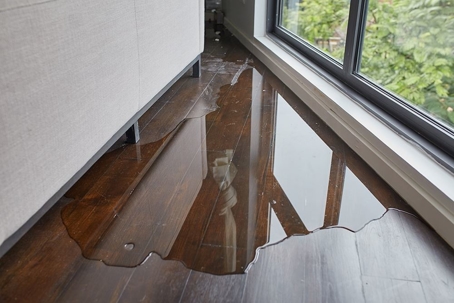Hardwood flooring is a must-have for every stylish home. However, this type of material should never be submerged in water. Any significant spill can cause all sorts of problems, from staining to warping. You will be disappointed if you wait until the damage is done before taking action.
That’s why it’s so important to get rid of the moisture right away. Fortunately, hardwood floors can be salvaged in the event of flooding and surface waters, provided the owner acts swiftly. Keep reading to know how to save your water-damaged hardwood floors.
1. Act Quickly
You need to hurry to do the first item you need to do. If the water is allowed to remain on your floors for a more extended period, it will cause more significant harm. Turning off the water supply is the first step if the water is escaping from a broken pipe or faulty appliance. Do this as soon as possible. After the water has been turned off, you can begin drying up your floors by removing any standing water.
2. Get Rid of the Water on the Floor
You can get rid of the water on the floor with a wet/dry vacuum, a mop, and a bucket. As much water as possible should be drained from the area as soon as possible. The longer the water pools, the more damage it does to the floor.
3. Use Fans and Dehumidifiers
Once you’ve removed as much water as possible, it’s time to start drying your floors. To do this, you’ll need to use fans and dehumidifiers. Place the fans around the room’s perimeter and point them towards the center. This will help circulate the air and dry out your floors. Dehumidifiers are also essential for removing water from the air. If you have a large room, you may need to use more than one dehumidifier.
4. Monitor the Humidity Levels
It’s essential to monitor the humidity levels in your home during the drying process. High humidity levels can cause wood floors to warp and cup, leading to mold and mildew. You can do this with a hygrometer that measures humidity levels. You can also use a moisture meter, which measures the moisture content of the wood.
5. Water-damaged Wood Floors Need To Be Sanded
Water-damaged wood floors need to be sanded to repair the damage and restore the beauty of floors. Sanding the floors will remove any water stains, grime, and debris that has accumulated on the surface of the floors.
Sanding the floors will also bring back their original finish. It will also assist in smoothing out any unevenness in the wood grain, resulting in the flooring appearing brand new once more.
Conclusion
If your hardwood floors have been damaged by water, it is essential to have a professional evaluate the extent of the damage and recommend the most appropriate next steps. If you hire a professional, they can decide the most effective technique to save your hardwood floors and return them to the stunning appearance they had when they were first installed.
Are you in need of professional water damage restoration services? Check out DryZone Inc. Any form of water removal that needs to be done in Fort Myers, Naples, or Marco Island is handled by our company using cutting-edge drying, dehumidification, and water damage restoration technology. We have technicians available around the clock, seven days a week, ready to respond to any emergency. Contact us today!


